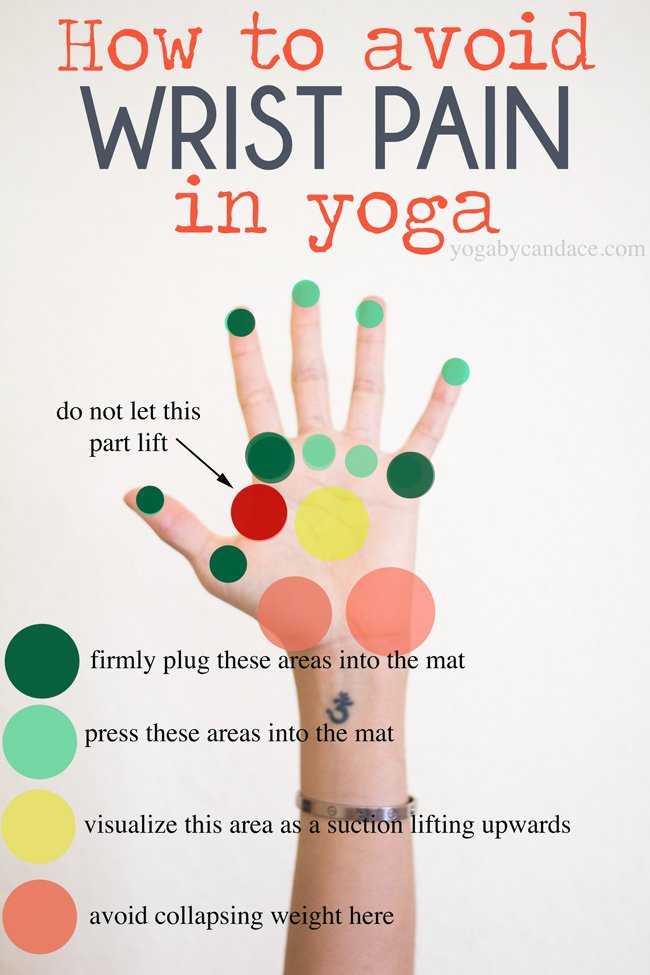Yoga and Wrist Pain: How to Avoid, Recover, Stretch and Strengthen
Yoga and wrist pain is likely the most common question and compliant I hear about in a yoga practice. It's also one that never really goes away as you advance in your journey. Whether you’re just starting out, adding an arm balance/handstand practice, or are hypermobile, it can be a pretty consistent weakness.
With that said, I work through many “Wrist Strengthening” and “Wrist Recovery” classes on my app that you can peruse. My app really is the best resource for all things yoga and I generally try to cover topics like this not only here on my blog, but in video format on my app so you can get a visual!
If you're not on my app yet though, I think these tips will definitely help get you going on managing wrist pain and recovery! Here are a few things to consider before placing your hands on the ground.
Hand Placement
When we first place our hands down in a yoga class, we don’t think too much about it but adding a wee bit of mindfulness can help tremendously on the conditioning of this complex joint.
It’s common to feel like we should dump the weight into the heel of our hand but instead, I want you to focus on an energetic push throughout the fingers. ie. Hasta Bandha. Learning to use this “hand lock” will dramatically help you when bearing weight on your palms. Creating habits like these early on will also help you advance when you feel ready for more intense weight-bearing postures like long holds, arm balances, and inversions like handstands.
Love this visual by @yogabycandace:
T CAMP vs. Y CAMP
I learned this amazing tip years ago and it’s too good to not share!
We live in two camps with our wrist mobility; camp Y and camp T.
Here’s how to check which camp you live in:
Bring your forearms, wrists, and palms to touch.
Slowly separate your hands while keeping your forearms and wrists pressing together.
Extend your palms as far from each other as you can. If your max reach looks something like a T then you’re a T! If your reach is more parallel to the ground beneath you, you’re a Y!
I use this as a reference for whether or not I should focus on strengthening and stabilizing or stretch my wrists before practicing.
Here are a few of my favorite ways to do each!
Strengthen/Stabilize the Wrists:
Gripping a tennis ball and giving it a few squeezes. Aim for 3-5 per wrist for 5 rounds. It’s amazing how quickly you’ll feel your forearms turn on!
Wrist curls: Grab a water bottle or 2-3lb dumbbell. Hold the weight with your palms facing down and your wrist hanging over the knee. Slowly lift your hand up as far as you can with a controlled motion.
Stretch the Wrists:
Here are a few of my favorite stretches that I often toss into the beginning of a class or a handstand practice. They’re relatively simple but very effective. I continue to move while in them to increase my range of motion to help avoid injury.
Wrist Rolls: Interlace all 10 fingers and slowly roll in a figure eight or infinity sign shape. Moving counterclockwise and then reverse the direction after a few rotations.
Table Top Side to Side: Find table top position and point fingers out to the sides of your mat. Gently rock side to side and linger anywhere you feel tension.
Table Top Rocks: Find table top position and flip the fingers to point back at your knees (thumbs closest to the outside edge of your mat). Gently rock back and forth and linger anywhere you feel tension.
Table Top Forearm Release: Find table top position. Bring your hands into fists and rest your knuckles together. Place the back of your hands to your mat and slowly bend and extend your elbows deeply stretching your wrists.
Another nice thing to look for when searching online for classes is the “Wrist Free Flows” that keep weight off of your wrists and hands! It’s fun as a teacher to think outside of the box for classes like these!
*Please remember that since I am not a doctor or physical therapist I can’t diagnose anything that might be going on in your wrists. I just learned over the years what helps me to take proper care of mine and how to avoid strain or injury when I practice.







